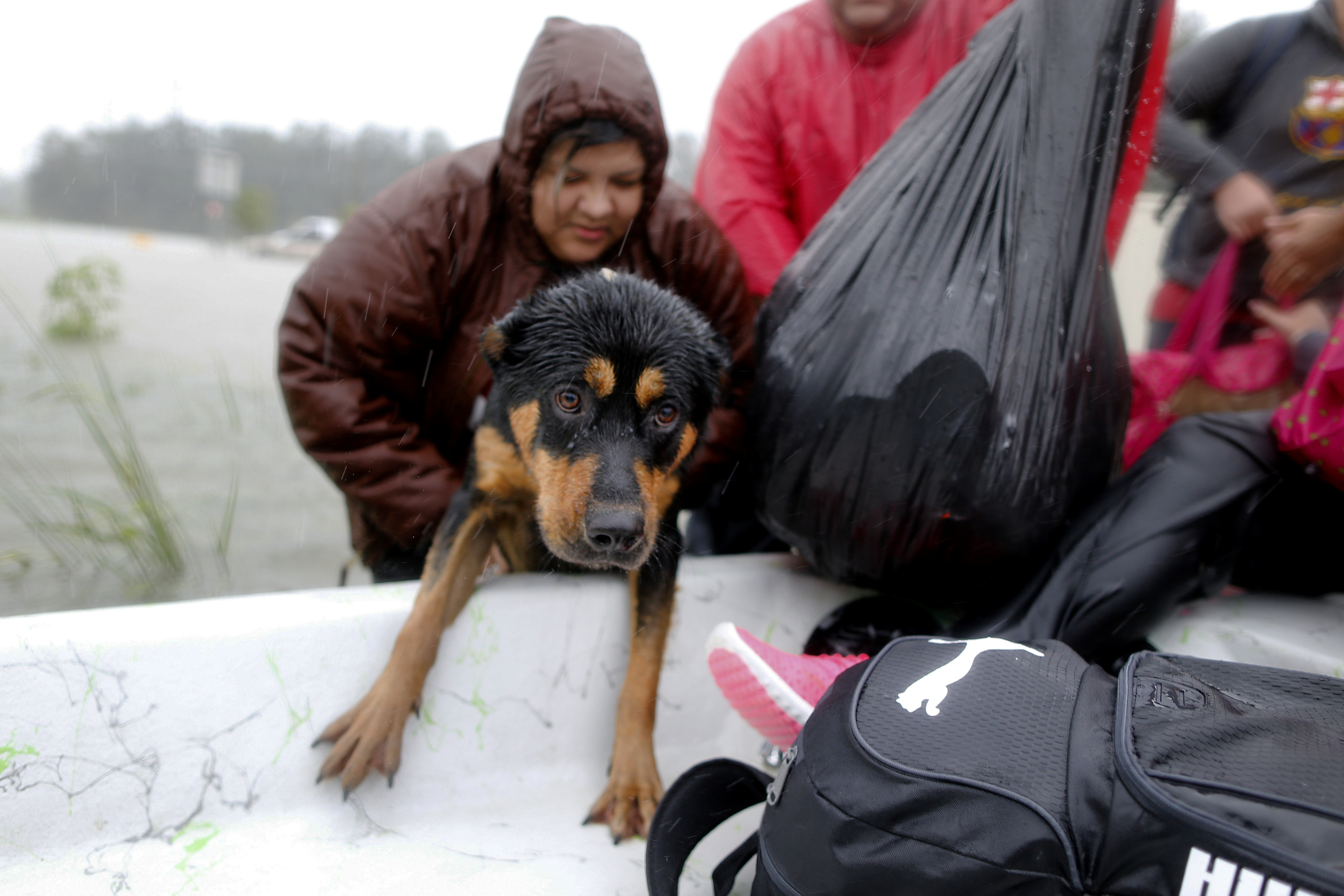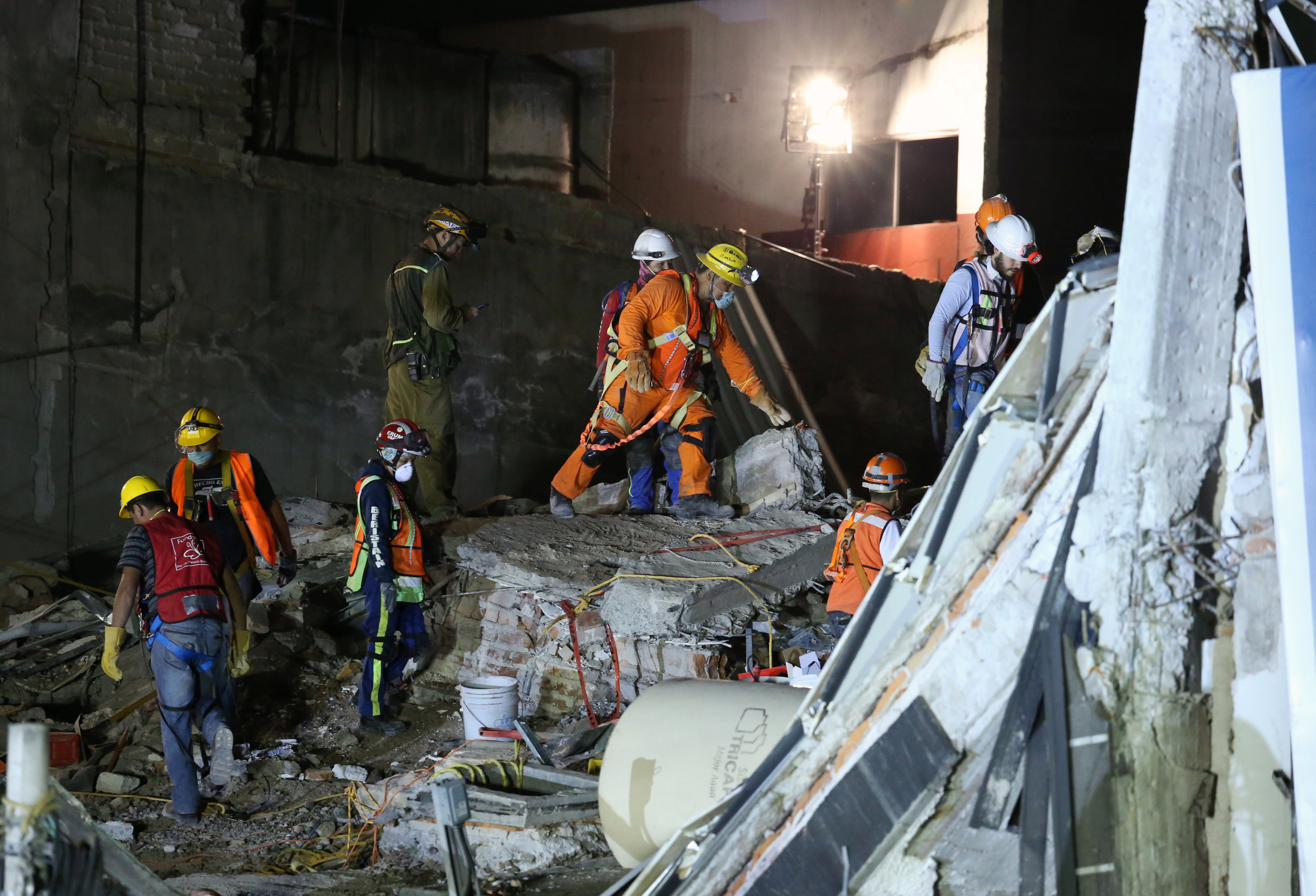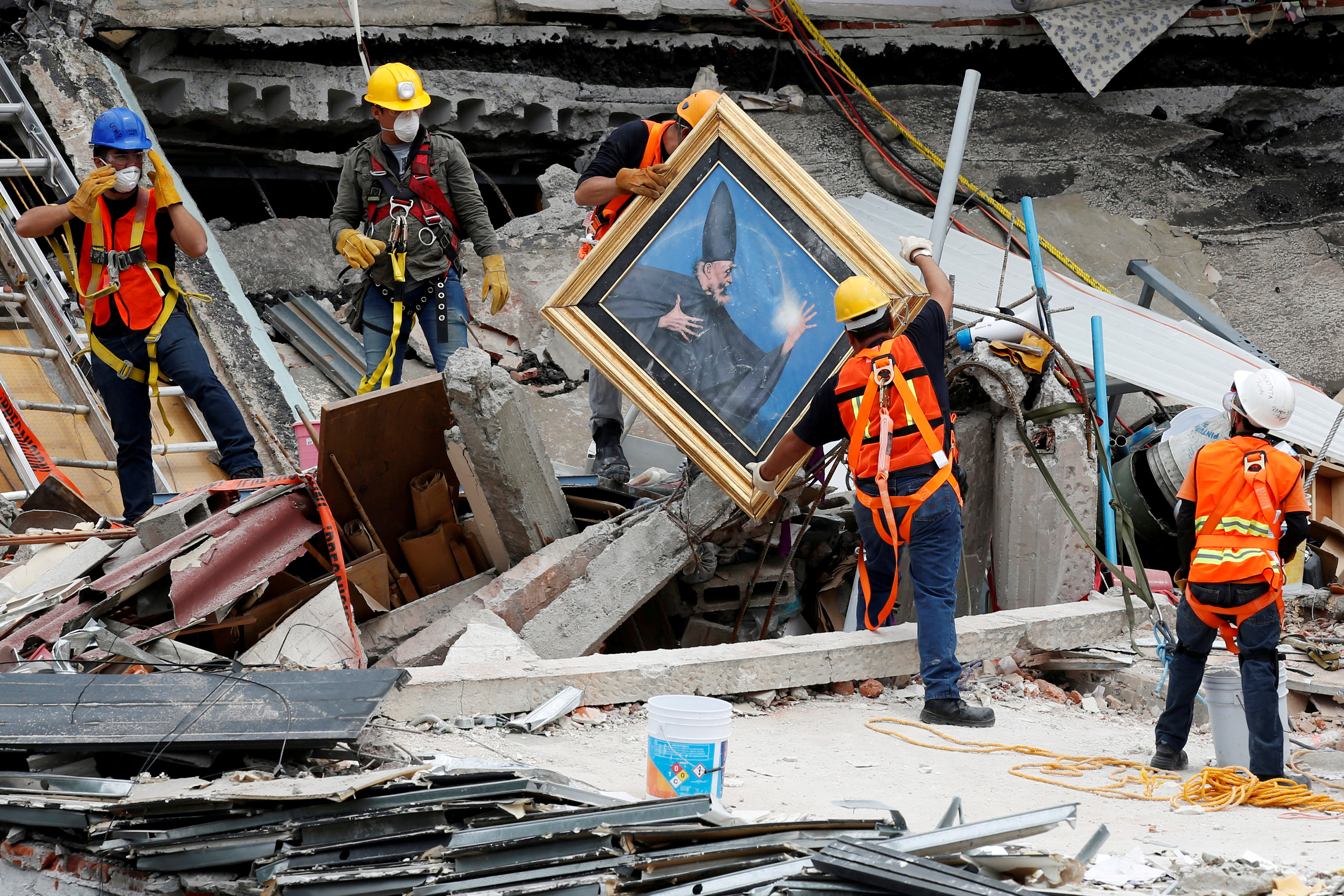
By Emily Flitter and Richard Valdmanis
LAKE CHARLES, La./HOUSTON (Reuters) – The remnants of Tropical Storm Harvey drenched northern Louisiana on Thursday as it moved inland, leaving rescuers to search homes around Houston and in the hard-hit southeastern Texas coast for more survivors or victims.
The storm killed at least 35 people and the death toll was rising as bodies were found in receding waters. Some 32,000 people were forced into shelters around the U.S. energy hub of Houston since Harvey came ashore on Friday as the most powerful hurricane to hit Texas in a half-century.
Storm-related power outages prompted two explosions at a flood-hit Arkema SA chemical plant in Crosby, Texas, 30 miles (48 km) northeast of Houston, with one sheriff’s deputy sent to the hospital after inhaling toxic chemicals.
“The plume is incredibly dangerous,” Federal Emergency Management Agency Administrator Brock Long said at a news briefing.
A 1.5-mile (2.4 km) radius around the plant had been evacuated and the company urged people to stay away from the area, warning further blasts were likely.
By Thursday, Harvey was downgraded to a tropical depression, located about 15 miles (24 km) south of Monroe, Louisiana. The storm’s rains wrought the most damage along the Gulf Coast and the National Weather Service warned as much as 10 inches (25.4 cm) could fall in Mississippi, Tennessee and Kentucky.
Rivers and reservoirs in Texas remained at or near flood level, with officials warning that high water would remain a danger in the region for the next few days.
Federal officials also had already rescued 10,000 people from flooded homes and would continue to search, Brock said.
The Houston Fire Department will begin a block-by-block effort on Thursday to rescue stranded survivors and recover bodies, Assistant Fire Chief Richard Mann told reporters.

Houses are seen submerged in flood waters caused by Tropical Storm Harvey in Northwest Houston, Texas, U.S. August 30, 2017. REUTERS/Adrees Latif
CAJUN NAVY ON THE MOVE
Nine members of the ad-hoc “Cajun Navy” towing boats behind pickup trucks gathered in Lake Charles early on Thursday, deliberating whether they could safely get in to badly flooded parts of coastal southeastern Texas, including Orange, Port Arthur and Beaumont.
“You can’t get anywhere by vehicle,” said Troy Payne, 56, who had driven in from Atlanta. “To me, this is a helicopter function from here on out unless the water level falls.”
Payne said he planned to drive north to try to find another way into Texas.
Nearly 30 inches (76.2 cm) of rain hit the Port Arthur area.
Beaumont said it had lost its water supply due to flood damage to its main pumping station.
Fort Bend County ordered a mandatory evacuation on Thursday for areas near the Barker Reservoir, which was threatening to flood. The reservoir is about 20 miles (32 km) west of Houston.
Clear skies in Houston on Wednesday brought relief to the energy hub and fourth-largest U.S. city after five days of catastrophic downpours. The first flight out of Houston since the storm hit boarded on Wednesday evening.
Police in Houston’s Harris County said 17 people remained missing.
Some 325,000 people and businesses already had applied for FEMA assistance and the agency already has paid out $57 million in aid, Brock said.
Anita Williams, 52, was among dozens of people lined up Thursday morning at a shelter at Houston’s George R. Brown Convention Center to register for FEMA aid. She said she had been able to get to her neighborhood on Wednesday to survey the damage to her one-story house as the flood waters receded.
“It’s not my house anymore. My deep freezer was in my living room,” she said, her voice breaking.
Williams said she had been trapped by the storm on the Houston Ship Channel bridge overnight on Saturday in her Toyota Camry before she was rescued Sunday by a man in a large truck. Her fiancé, a disabled man, had to be rescued from their house as waters rose to chest level and joined her.
“I just thank God they were able to get to him,” Williams said.

David Michaelis holds his 3-year-old grandson Teddy as he wades through flood waters from Tropical Storm Harvey in Orange, Texas, U.S., August 30, 2017. REUTERS/Jonathan Bachman
ENERGY PRODUCTION DISRUPTED
Flooding shut the nation’s largest oil refinery in Port Arthur in the latest hit to U.S. energy infrastructure that has sent gasoline prices climbing and disrupted global fuel supplies. [O/R]
The storm prompted the U.S. Energy Department to authorize the first emergency release of crude oil from the Strategic Petroleum Reserve since 2012. Some 500,000 barrels of oil will be delivered to a Phillips 66 refinery in Louisiana unaffected by the storm, an Energy Department spokeswoman said in a statement.
Average U.S. retail gasoline prices have surged to $2.449 per gallon nationwide in the storm’s wake, up 10.1 cents from a week ago, the AAA said on Thursday.
Moody’s Analytics is estimating the economic cost from Harvey for southeast Texas at $51 billion to $75 billion, ranking it among the costliest storms in U.S. history.
At least $23 billion worth of property has been affected by flooding from Harvey just in parts of Texas’ Harris and Galveston counties, a Reuters analysis of satellite imagery and property data showed.
Governor Greg Abbott warned that floodwaters would linger for up to a week. The area affected is larger than that hit by 2005’s Hurricane Katrina, which killed more than 1,800 people in New Orleans, and 2012’s Superstorm Sandy, which killed 132 around New York and New Jersey, he said.
U.S. Vice President Mike Pence and several Cabinet secretaries will travel to Texas on Thursday to meet residents affected by the storm.
For a graphic on storms in the North Atlantic, click: http://tmsnrt.rs/2gcckz5

A dog is rescued from the flood waters in Beaumont Place.
REUTERS/Jonathan Bachman

Two rescuers from U.S. Navy Helicopter Sea Combat Squadron 7 are lowered to a house after Tropical Storm Harvey flooded a neighborhood in Beaumont, Texas, U.S. in a still image from video August 30, 2017. U.S. Navy/Petty Officer 1st Class Ernest Scott/Handout via REUTERS
(Additional reporting by Richard Valdmanis, Mica Rosenberg, Marianna Parraga, Gary McWilliams, Ernest Scheyder, Erwin Seba, Ruthy Munoz, Peter Henderson and Andy Sullivan in Houston, David Gaffen and Christine Prentice in New York, Susan Heavey in Washington, Jon Herskovitz in Austin, Texas, and Brendan O’Brien in Milwaukee; Writing by Scott Malone and Jon Herskovitz; Editing by Lisa Von Ahn and Bill Trott)






















